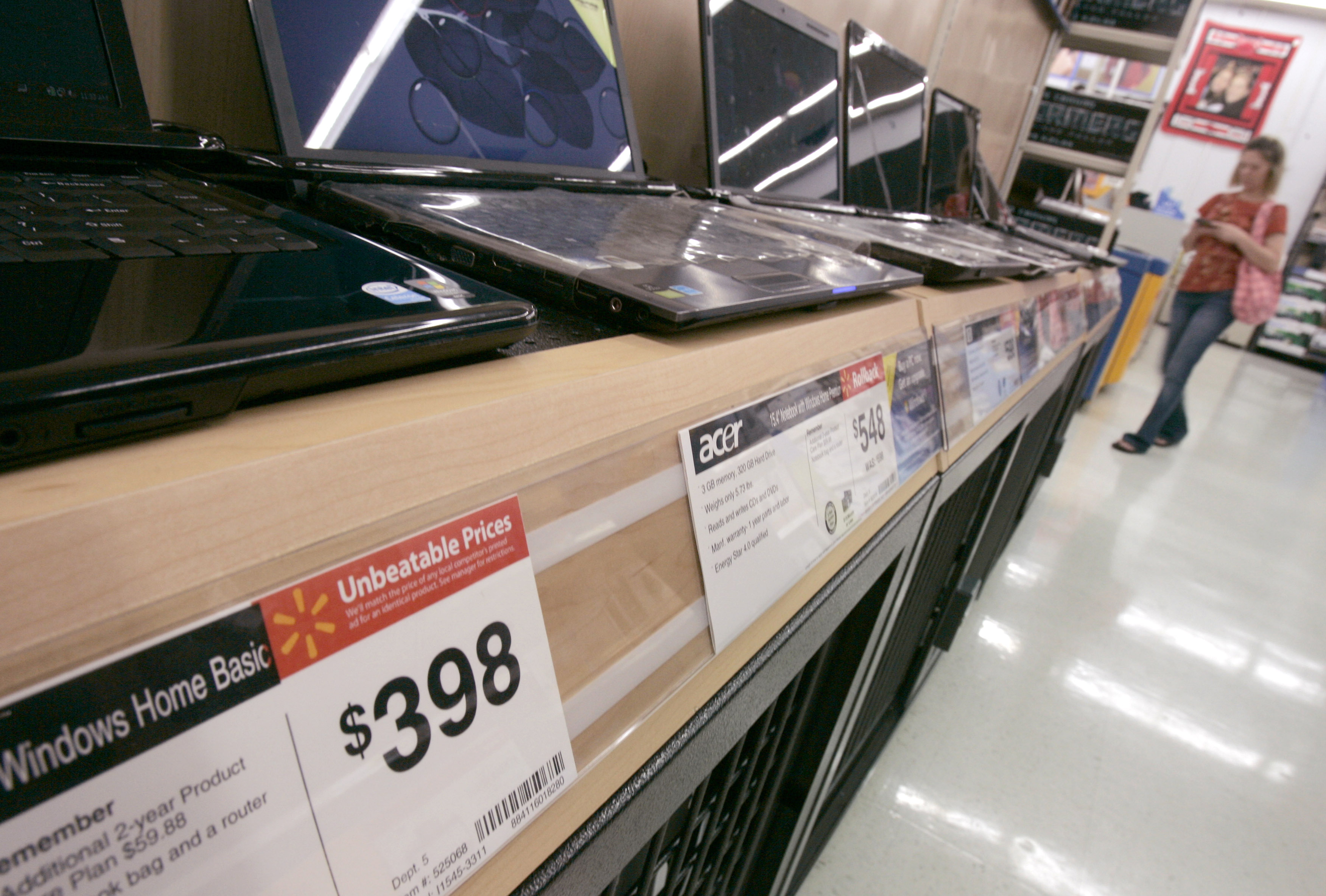Big-ticket sales prop up economy

A woman walks past a display of inexpensive laptop computers in this July 24 file photo at a Walmart store in Little Rock, Ark. Orders for factory goods expected to last at least three years rose last month by the largest amount since July 2007, fresh evidence that manufacturing is rebounding from a steep recession.
Washington ? Consumers and businesses went on a big-ticket spending spree in July, sending home, car and equipment sales soaring by the largest amount in years.
The sales, detailed in two government reports Wednesday, confirmed a subtle but marked shift in confidence about the economy.
New home sales jumped almost 10 percent from June, while orders for long-lasting goods like appliances, planes and computers rose nearly 5 percent in July, the third increase in the past four months.
“It looks like we’ve hit bottom and we’re now slowly trying to dig our way out,” said Nigel Gault, chief U.S. economist at IHS Global Insight.
Still, it remains unclear whether the growth can be sustained. Though the increases in housing sales and manufacturing last month were dramatic, they came from extraordinarily low levels and were fueled by temporary government programs like Cash for Clunkers and tax credits for home sales.
Most economists now agree the recession that began in December 2007 has ended or is ending. Some say the economy is poised to grow strongly in the July-September quarter, but will probably show weaker growth after government stimulus spending tapers off.
Sales of new homes surged to a seasonally adjusted pace of 433,000 in July from 395,000 in June, the Commerce Department said, providing another sign the housing market is bouncing back from the historic bottom reached early this year. Driven by falling prices, the fourth-straight monthly increase was greater than expected. Sales haven’t risen so dramatically since February 2005.
While sales are still off nearly 70 percent from the frenzied peak four years ago, they are still up more than 30 percent from the bottom in January — a big relief after a long and painful decline.
“We can stop worrying about the housing market and start playing closer attention to other issues, such as when credit will start flowing more freely,” Joel Naroff, chief economist at Naroff Economic Advisors, wrote in a note to clients.
The improved outlook could help further boost the economy. As home sales rise, builders will gradually need to hire more workers to pour foundations and pave roads, reversing the trend that saw 1.4 million industry jobs shed since the recession began.
“These are crucial elements of a sustainable recovery,” David Resler, chief economist at Nomura Securities, wrote in a research note.
There were 271,000 new homes for sale at the end of July, down more than 3 percent from May. At the current sales pace, that represents 7.5 months of supply, which means builders have scaled back construction to the point where supply and demand are coming into balance.
A similar trend is happening in other industries across the economy.
Orders for transportation equipment, including cars, car parts and airplanes rose more than 18 percent, helping to drive the durable goods data.
A huge jump in aircraft orders accounted for most of that gain. Also, auto production improved last month as General Motors and Chrysler reopened many plants that were shut in May and June while the companies restructured and emerged from bankruptcy protection.







